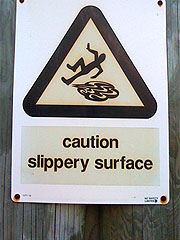Brian Tracy wrote a book devoted to closing techniques, The Art of Closing the Sale.
Tracy has written a thorough and focused handbook on the most important concept of old school selling: techniques for closing the sale. It covers two dozen techniques, the sandwich close, the secondary close, the walk-away close, the today-only close, the porcupine close, the sharp-angle close. Each colorfully named technique is explained with specific examples of what the salesperson (and the prospect) might say. Tracy purports that “top sales professionals have their closes planned word for word, and so should you.” The book provides sufficient detail and examples so the reader can do just that. The book is thorough, to the point of repetition; which is better than the frustrating alternative of not enough detail to be useful.
The structure of the The Art of Closing the Sale is simple; lifestyle advice, then ten categories of objections, and finally closing techniques. The book briefly covers several other useful concepts for salespeople; the use of silence, debriefing sales meetings, and focusing; particularly on prospecting, presenting and closing.
Lifestyle advice.
Tracy devotes several early chapters to lifestyle advice. The premise is headlined as “Fly with the Eagles – get around positive people.” The author urges the reader to associate with people you admire who are successful, so “you will adopt their behaviors and be more successful.” He devotes much of the book to extolling “winning’ behaviors” including diet, exercise and sleep; and later addresses winners’ and losers’ sales behaviors. These chapters have a hokey, self-help feel that doesn’t contribute to the books focus on closing. Tracy’s entire background context for closing  is be a winner; by being a positive winning person, you’ll use closing techniques more effectively. His lifestyle advice, delivered in corresponding doses of cheerleading and challenging would never find its way into a Clayton Christenson paper.
is be a winner; by being a positive winning person, you’ll use closing techniques more effectively. His lifestyle advice, delivered in corresponding doses of cheerleading and challenging would never find its way into a Clayton Christenson paper.
The Art of Closing the Sale introduces two premises that rang true for me, and are useful to keep in mind.
1. Salespeople unconsciously avoid the possibility of rejection and this limits effectiveness.
A good reminder; because we humans rationalize our behavior, it’s useful to ask ourselves what’s motivating that behavior. Is it a fear of rejection that’s keeping me from making that phone call? And if so, what should I be doing to move forward?
2. Buyers often hold on to a hidden objection.
I hadn’t heard this one before, but a hidden objection is a way for a buyer, either deliberately or unconsciously, to maintain control over a decision. Tracy says that until you unearth the hidden objection and satisfy it, you will not close the sale. He explains this premise, and it’s antidotes.
Where the Book Loses Me.
There are two kinds of sales books. The first, where the author, in snappy suit and matching pocket handkerchief, is pictured on the book’s cover, and the second, where he isn’t. This alone defines the text and the target more than anything else.

The enigma of The Art of Closing the Sale is that if you polled the most successful salespeople on the planet, few of them would have even heard of the sharp-angle close, the sandwich close, or the porcupine close, let alone employ them as techniques. Why is that?
Tracy assumes closing techniques work well all the time. He never asks Under what circumstances are closing techniques more or less helpful?
The author clearly expresses the techniques with simple explanations and examples, but is short on insightful analysis. Guidance for when and where closing techniques are effective and how to navigate their use, is context the reader needs. By omitting this analytical discussion, Tracy is making the assumption that closing techniques are of equal and critical importance for every type of salesperson and product. They aren’t. The book is too simple. It sets no context for when closing techniques are more important and when they are less important; only that if you’re a winner you’ll be a better closer.
As an example of context setting, here are two variables that can help you decide how hard to close.
1) The more emotional the buying experience, the more helpful closing techniques can be to a salesperson.
Shoes, clothes, jewelry, art, cars, music and even computers are often emotional buys. Owning and using the item is attached to our identity. Cleaning services, industrial sheet metal, fund accounting, or a new roof or septic system are less emotional. As the examples hint, closing techniques are geared more for personal buy decisions, and less for institutional ones.
2) Size.
Large purchases are usually more deliberate, and at the moment of the buy decision, less able to be influenced by a salesperson. When the decision to buy or not is shared between several people, closing is often not a moment, but a process spread out over time. In general the larger the purchase and the more parties involved, the less effective a closing technique is.
This is not to say that closing techniques can’t help the salesperson in large institutional sales, just that, on average, they help less than they do for emotional and/or smaller purchases. And, using them is more risky.
Why are closing techniques risky?
Closing techniques are designed to influence the buyer. At the moment of sale, a closing technique helps the seller close; whether the buyer truly benefits or not can only be determined later. Closing techniques benefit sellers more than buyers. At some level, they are manipulative. How manipulative, and which manipulative behavior is okay or even appropriate, is a lovely question. Tracy doesn’t address this question, he circumvents it. He maintains that ushering a buyer through the buy decision does the buyer a favor. He creates a buyer benefit from closing techniques.
“Professional Salespeople do not use tricks, games or manipulation in the sales process. The (insert closing technique) merely helps a buyer through the moment of indecision and stress that always accompanies a buying decision.”
Tracy cites studies (though not specifically) about the mindset and stress levels of making a buying decision. The assumption is that you, the salesperson, do the buyer a service by taking them quickly through the buying decision; relieving them of the stress of indecision. That’s the benefit to the buyer.
To me, this is a perfect example of we humans rationalizing our behavior. Tracy is rationalizing the manipulation inherent in closing techniques. He goes on to write, “Remember when you make a prospect feel good about himself by listening to him with rapt attention, he is much more likely to warm up and buy from you.”
Rapt?..Really?
Closing techniques are manipulative. That’s not such a horrible thing, most of the time. But it isn’t black and white. The use of closing techniques is a moral puzzle every salesperson must navigate.
The underlying assumption in the book is that closing techniques are always good. Tracy points out that buyer’s may have a hidden objection. His book has hidden assumptions. Here’s one that’s worth shining some light on. In the Art of Closing the Sale, “Getting the close” is the moment when the salesperson is informed that the buyer has made a decision to buy. A lot of techniques are devoted to discovering this piece of information. This is distinctly different from helping a client make the decision to buy. Tracy says, “ask what color they would like it in, or how many they will need, or when would they like delivery. If they answer, they have made a buying decision.” Yes, it’s useful to know that a client is ready to buy, but focus not on determining if a buying decision has been made, but informing a buyer so they are prepared to make a buying decision. The first, like closing techniques in general, serves only the seller, the second done properly serves the potential buyer as well.
The focus on closing is this book’s value. I was charmed by all these closing techniques. I am happy to know their colorful labels and understand how they work. I would, and have knowingly and unknowingly, used some of the gentler techniques. But I am wary about using many of them, especially those that withhold information or imply something that isn’t true. People like to buy. People don’t like to be closed. In the long-term, especially in non-retail businesses, relationship trumps closing. I try to keep that in mind.
Tags: book review, closing